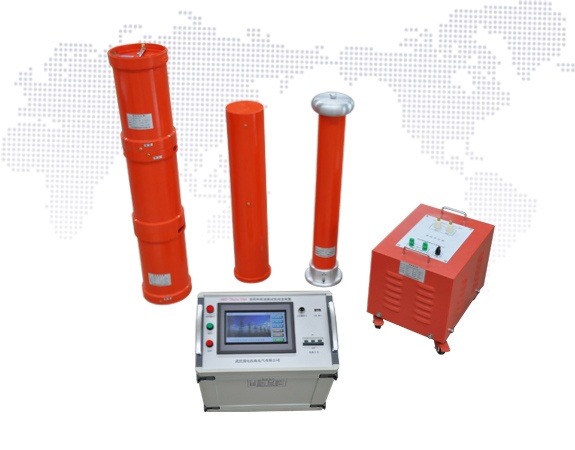The transformer AC withstand voltage test is a test in which a sinusoidal power frequency AC test voltage exceeding a certain multiple of the rated voltage is applied to the windings of the tested transformer together with the bushing, and the duration is 1 min. Its purpose is to use a test voltage higher than a certain multiple of the rated voltage to replace the atmospheric overvoltage and internal overvoltage to assess the insulation performance of the transformer. It is an effective way to identify the insulation strength of transformers, and is also an important experimental item to ensure the safe operation of transformers and avoid insulation accidents. Conducting AC withstand voltage tests can find moisture and concentrated defects in the transformer main insulation, such as winding main insulation cracks, winding loosening and displacement , The lead insulation distance is not enough, and the insulation adheres to defects such as dirt.

HV Hipot GDTF series cable frequency conversion series resonance withstand voltage test device
The AC withstand voltage test is a destructive test in the insulation test. It must be tested after other non-destructive tests (such as insulation resistance and absorption ratio test, DC leakage test, dielectric loss correction cut and insulating oil test) are qualified. . After this test is qualified, the transformer can be put into operation. AC withstand voltage test is a key test. Therefore, the preventive test regulations stipulate that the transformer with 10kV and below, in 1~5 years, 66kV and below, must be subjected to AC withstand voltage after overhaul, after replacement of windings and when necessary test.
Test method
(1) Test wiring Small and medium power transformers below 35kV are applied with AC withstand voltage test wiring. All windings should be tested. During the test, the lead wires of each phase winding should be short-circuited together. If the neutral point has lead wires, the lead wires should also be short-circuited with the three phases.
(2) Test voltage The handover test standard stipulates that transformers with a capacity below 8000kV and a winding rated voltage below 110kV shall be subjected to an AC withstand voltage test in accordance with the test voltage standards listed in Appendix 1 of the standard. Preventive test regulations stipulate: The test voltage value of oil-immersed transformer is detailed in the regulation table (regular test replaces the winding voltage value by part). For dry-type transformers, when all windings are replaced, follow the factory test voltage value; for partial replacement of windings and regular tests, press 0.85 times the factory test voltage value.
(3) Precautions In addition to the general AC withstand voltage test precautions, the following points should be noted according to the characteristics of the transformer:
1) The test transformer must be equipped with an overcurrent protection trip device.
2) The AC withstand voltage test of the three-phase transformer does not need to be carried out in phases. However, all the lead wires of the three phases of the unified winding must be short-circuited before the test, otherwise it will not only affect the accuracy of the test voltage, but may even endanger the main insulation of the transformer.
3) The preventive test regulations point out that for all-insulated transformers below 66kV, when the site conditions are not available, only the external construction frequency withstand voltage test can be carried out.
4) For power transformers whose neutral point insulation is weaker than other parts or graded insulation, the above external AC withstand voltage test cannot be used, but an induction withstand voltage test of 1.3 times the rated voltage should be used.
5) It must be tested after being filled with qualified oil and resting for a certain period of time.
6) For medium- and small-capacity transformers with a voltage level of 35kV, the test voltage is allowed to be measured on the low-voltage side of the test transformer. For power transformers with a larger capacity, in order to make the measurement accurate and reliable, a voltage transformer or an electrostatic voltmeter should be used. The test voltage is directly measured on the high voltage side.
7) If discharge or breakdown occurs during the test, immediately lower the voltage and cut off the power supply to avoid enlarged failure.
Post time: Jan-05-2022
